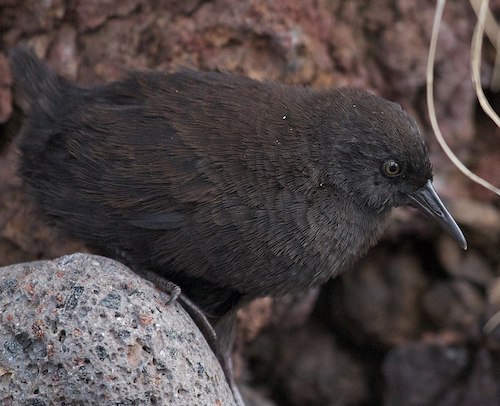Tristan da Cunha

Birding Tristan da Cunha
Tristan da Cunha has the number of birds on a par with Ascension. Inaccessible Island and Gough Island are together a UNESCO World Heritage Site and a wildlife reserve due to the large number of breeding seabirds found there, including endemics. The birds include the Tristan albatross, Atlantic yellow-nosed albatross, northern rockhopper penguin, great shearwater, Antarctic tern and Tristan thrush. The Inaccessible Island rail, the world’s smallest living flightless bird, is endemic to Inaccessible Island. The Tristan albatross is also native to the islands of Tristan da Cunha, as well as the Atlantic petrel. Gough Island is home to the almost flightless Gough Island moorhen and the critically endangered Gough bunting. The Brown skua is the top predator of the island’s ecosystem, feeding on other seabirds as well as land birds such as the Inaccessible Island rail. However, birds of prey such as the barn owl and the Amur falcon are occasional visitors.
-
Wikipedia
Webpage
-
African Bird Club - Tristan da Cunha
WebpageThere are two main groups of islands off southern Africa: the Tristan da Cunha archipelago and Gough Island (dependencies of Saint Helena which is an overseas territory of the United Kingdom) in the central South Atlantic, and the Prince Edward Islands (administered by South Africa) in the south-west Indian Ocean. Further south lie Bouvet and the Antarctic continent, which support even fewer species, but these include several spectacular and sought-after birds. Together, more than 50 species of seabirds breed in the African sector of the Southern Ocean, and several other species regularly visit these waters. -
RSPB - Tristan da Cunha Programme
WebpageRats have destroyed many great seabird colonies around the world, after introduction by humans. On the main island of Tristan da Cunha the once vast colonies of petrels are now reduced to tiny remnants. On Gough Island, researchers have discovered that Gough’s house mice have learned to attack and kill seabird chicks, even huge Tristan albatross chicks. This predation is widespread and devastating. Tristan albatrosses and Atlantic petrels are declining fast. Fortunately, two other islands (Nightingale and Inaccessible) remain rodent-free and it is vital they remain so – they are havens for seabirds and endemic land birds such as the rarest “British” bird, the Wilkins’ bunting which is found only on Nightingale, and the world’s smallest flightless bird, the Inaccessible rail. Tristan albatross, Gough bunting, Gough moorhen, Atlantic yellow-nosed albatross, spectacled petrel, Tristan thrush, Inaccessible bunting, Wilkins’ bunting, sooty albatross, Atlantic petrel.
